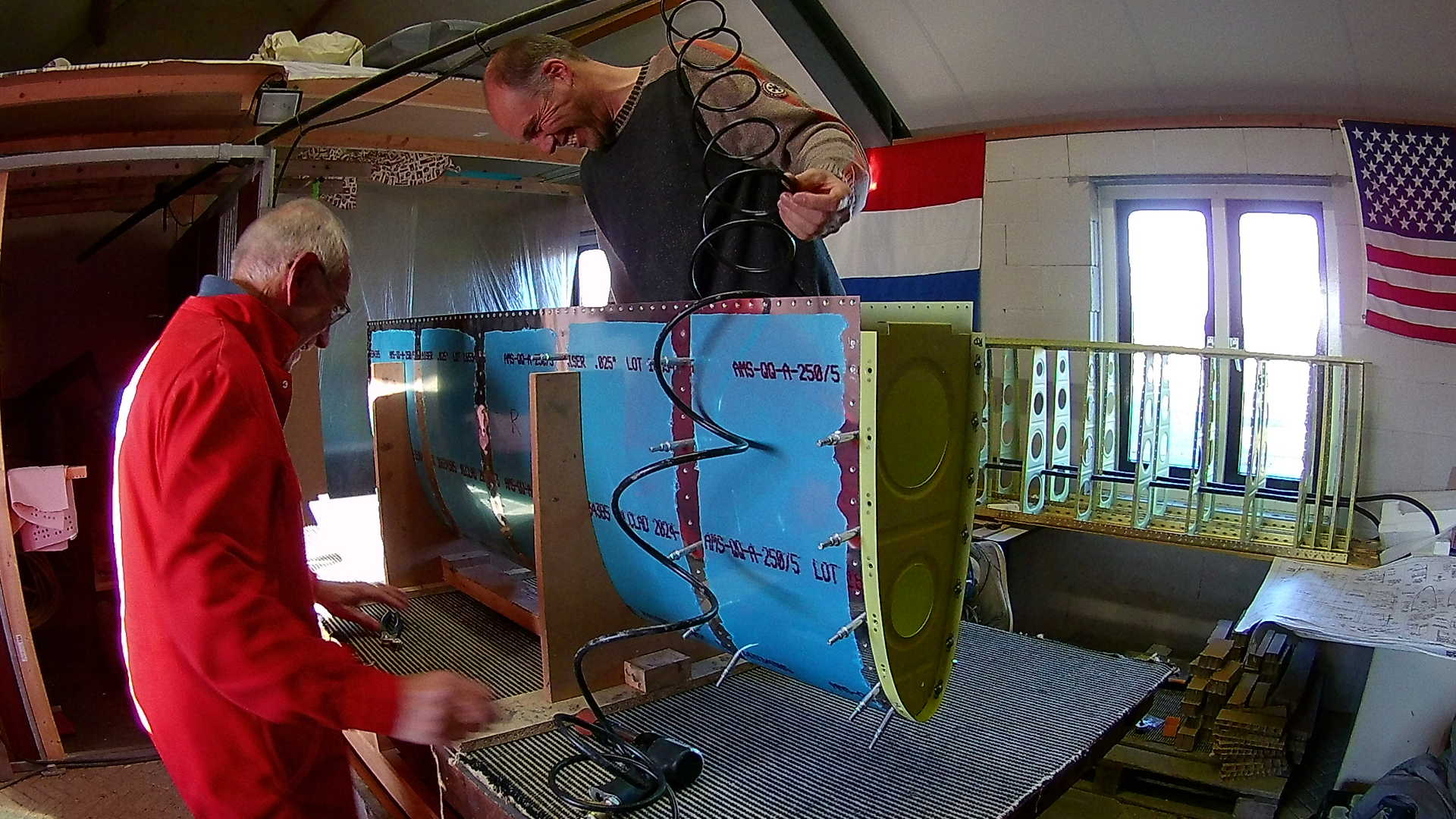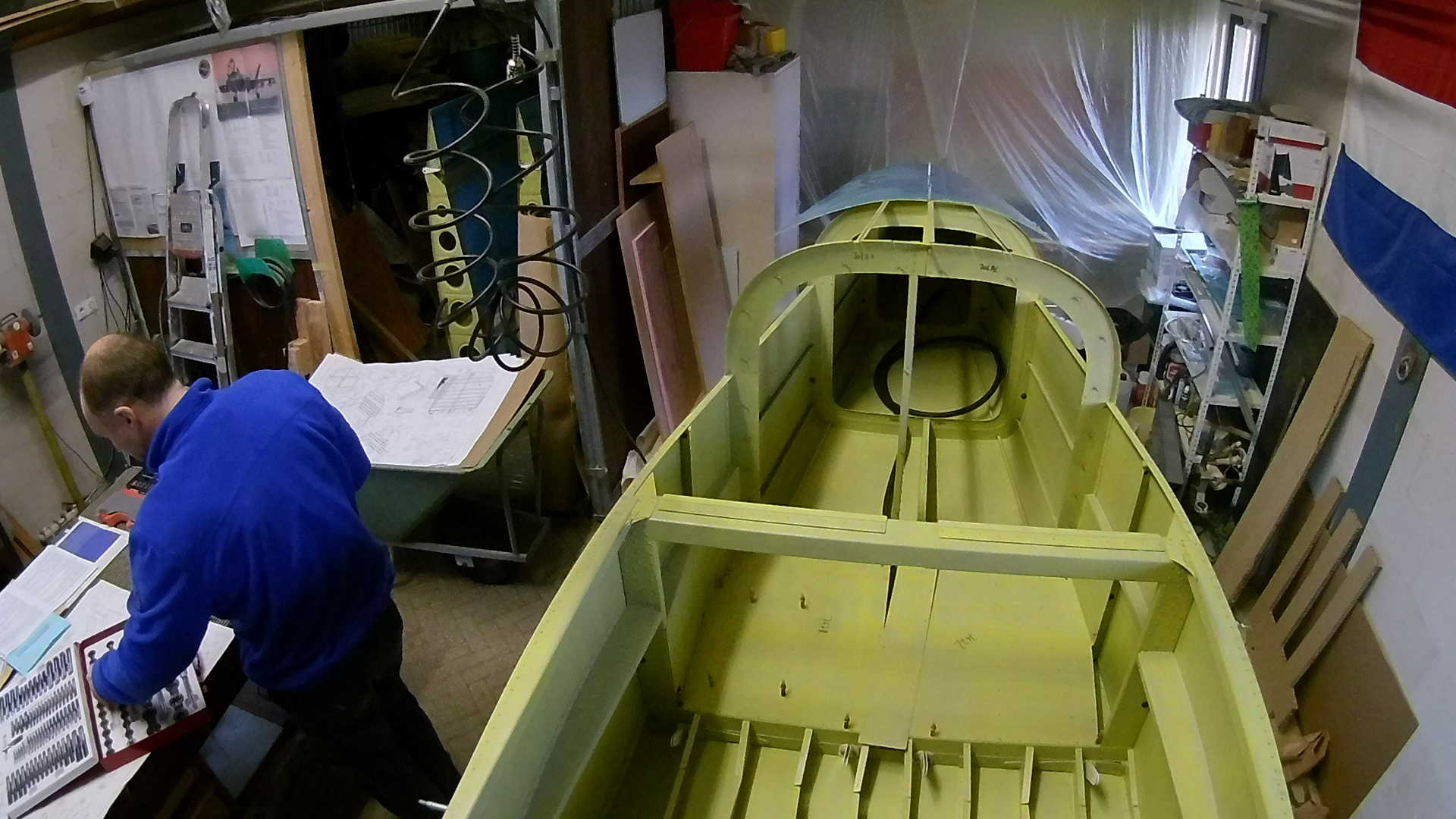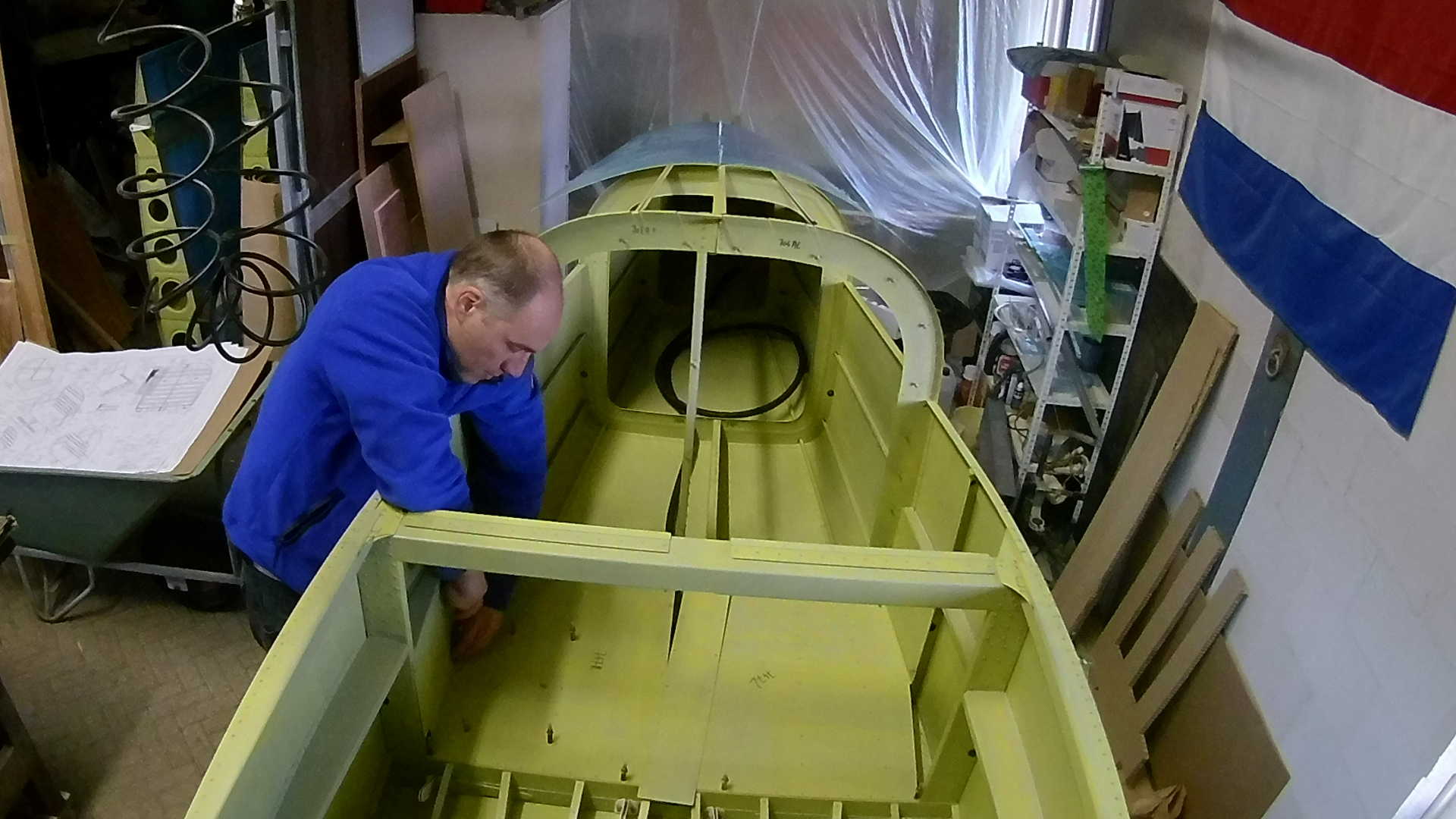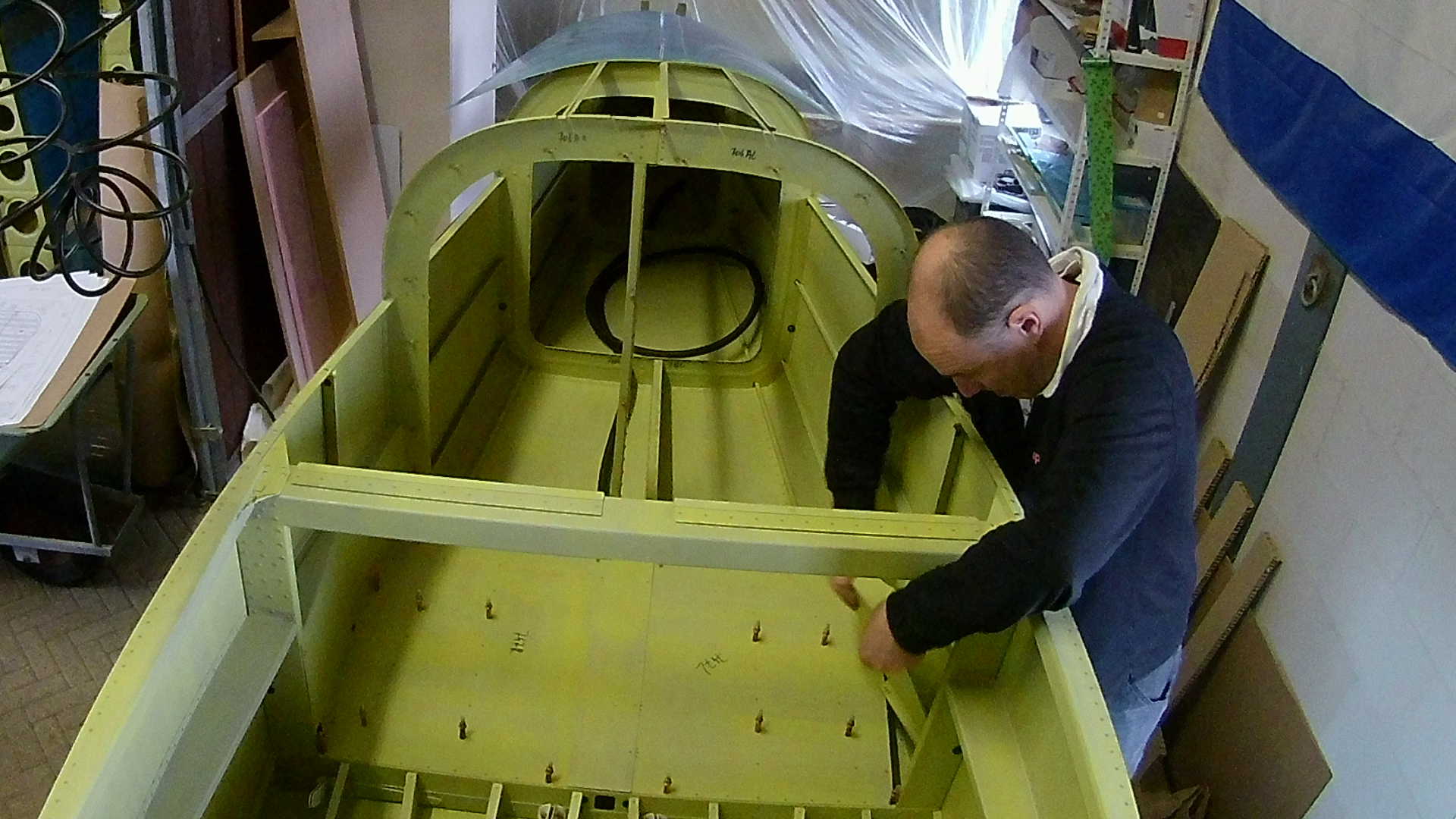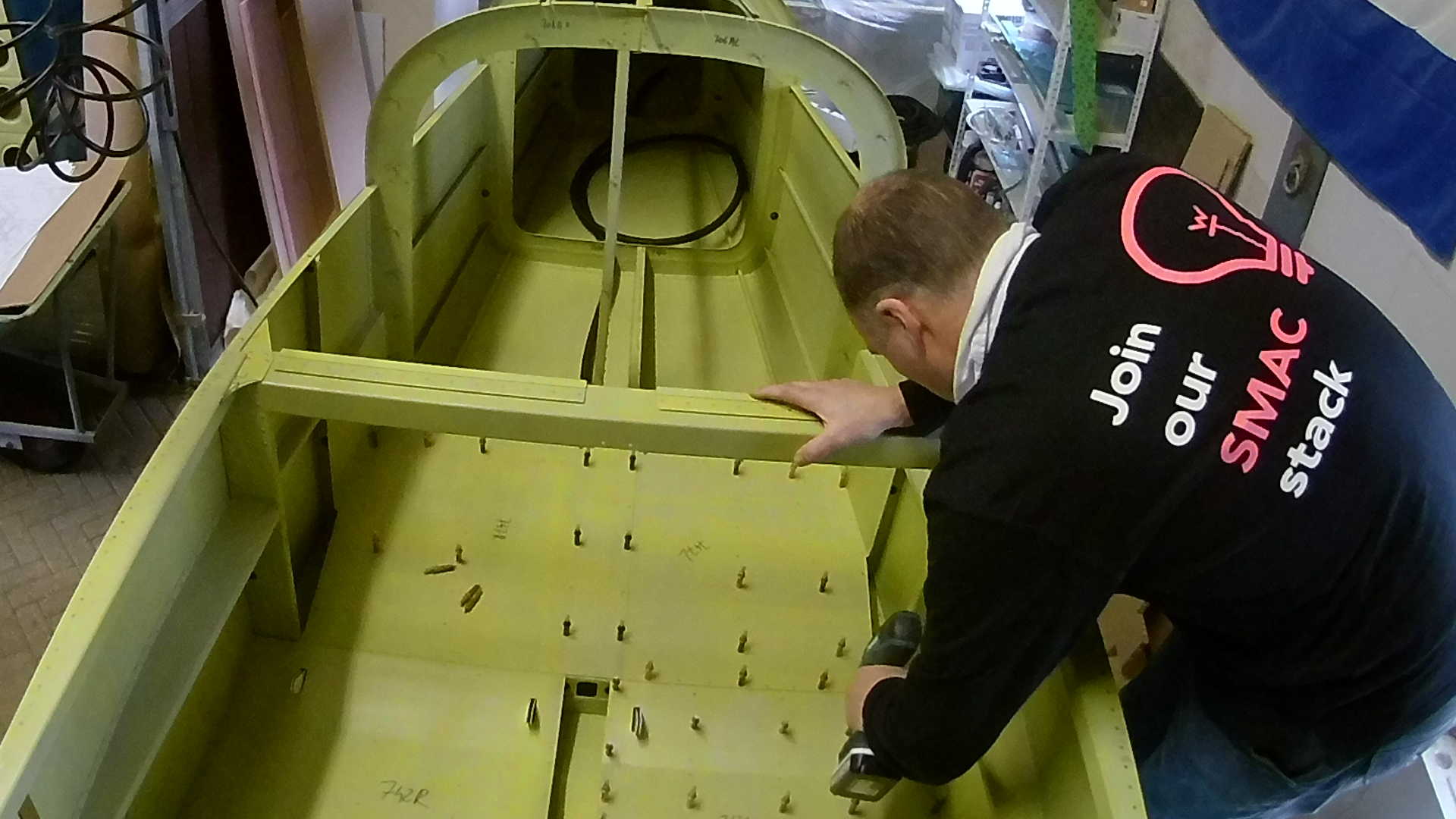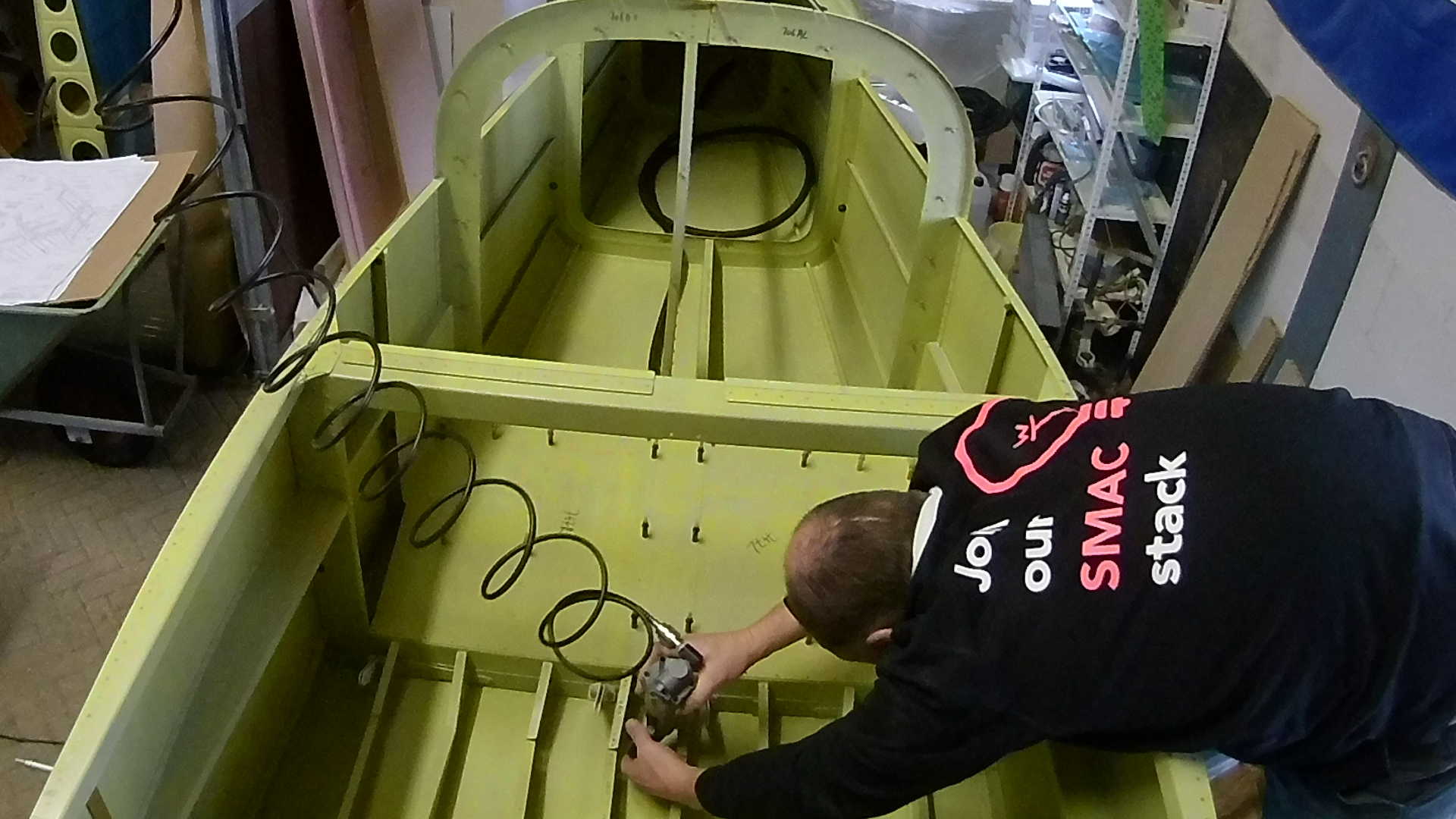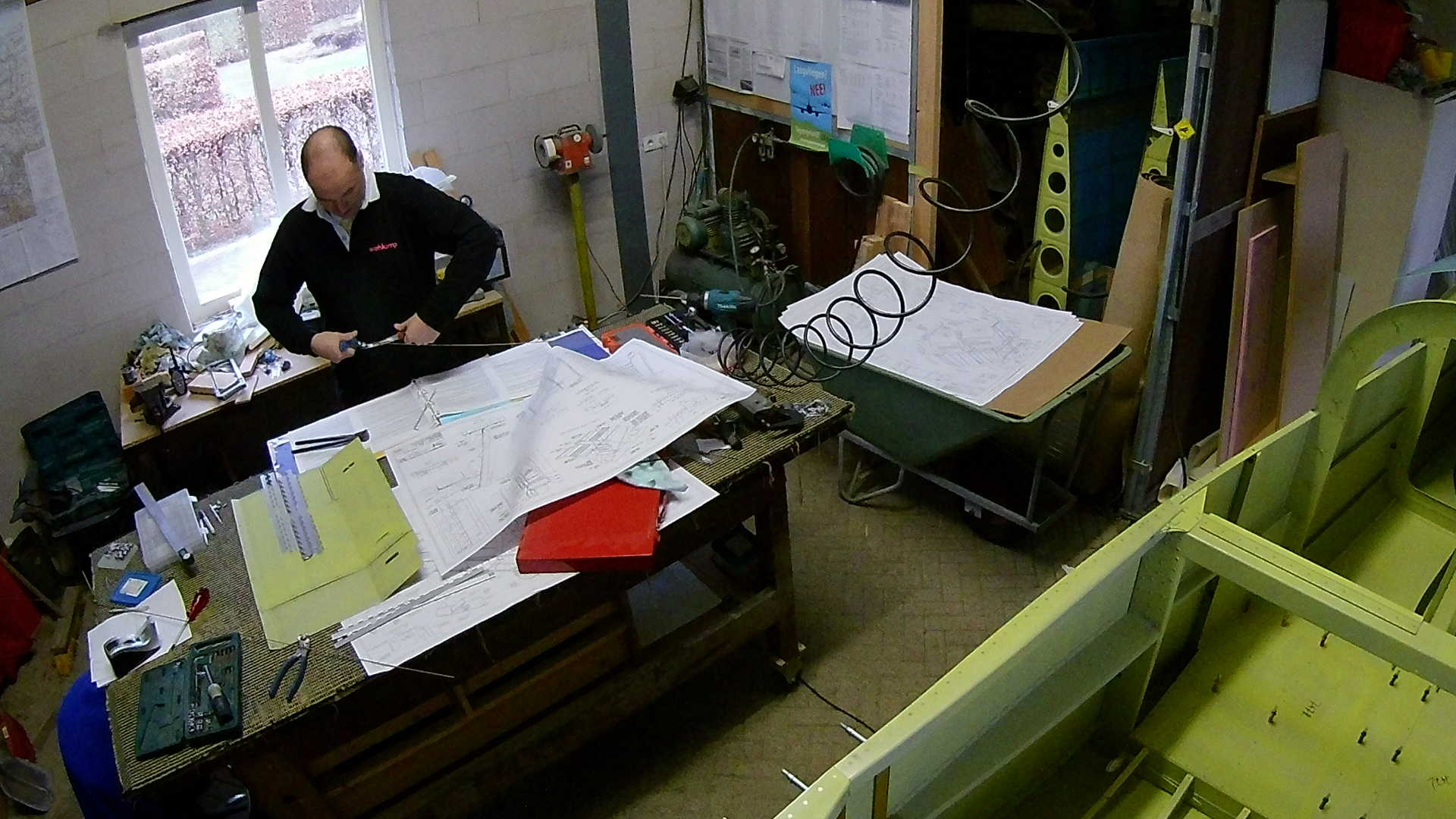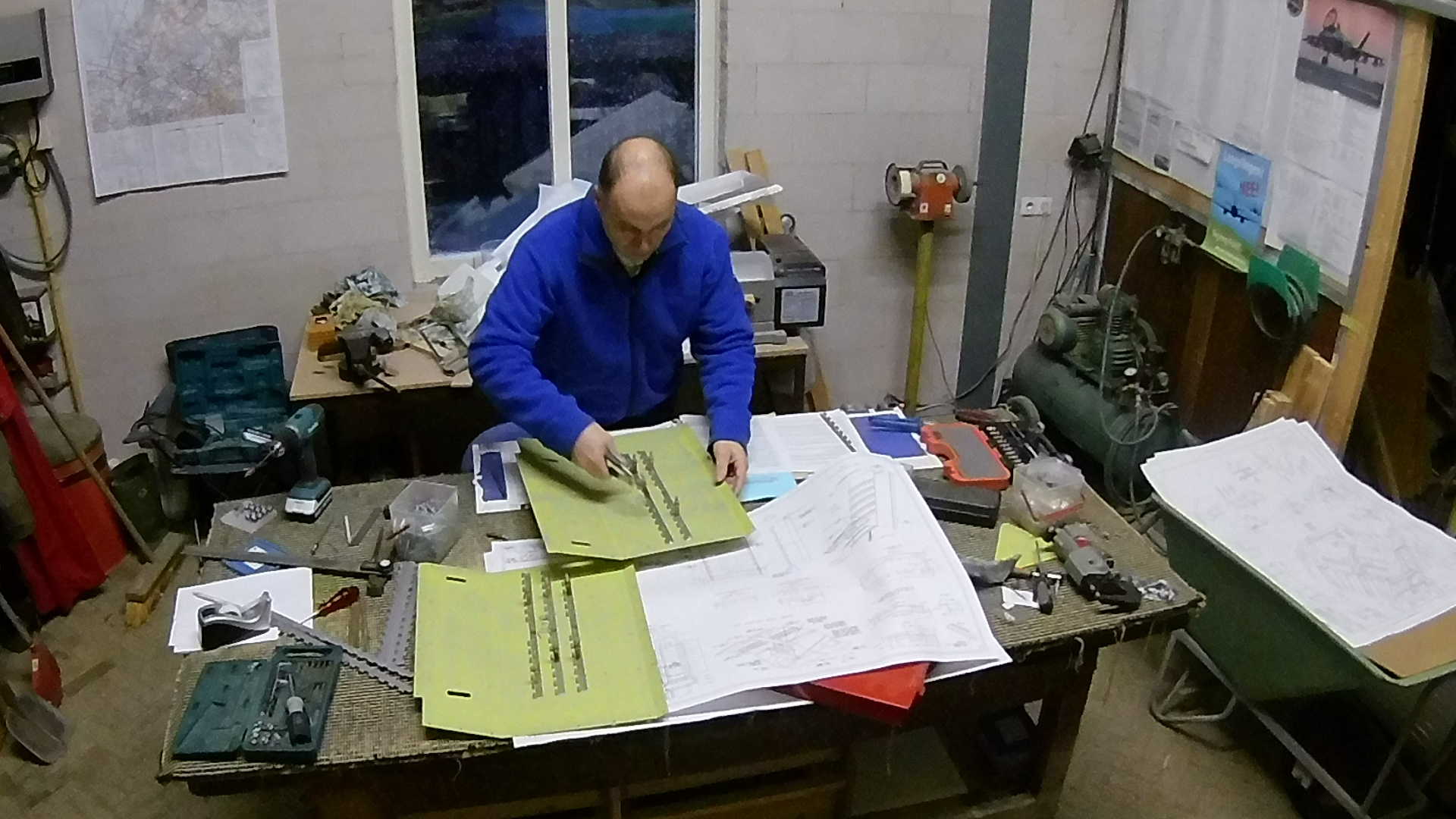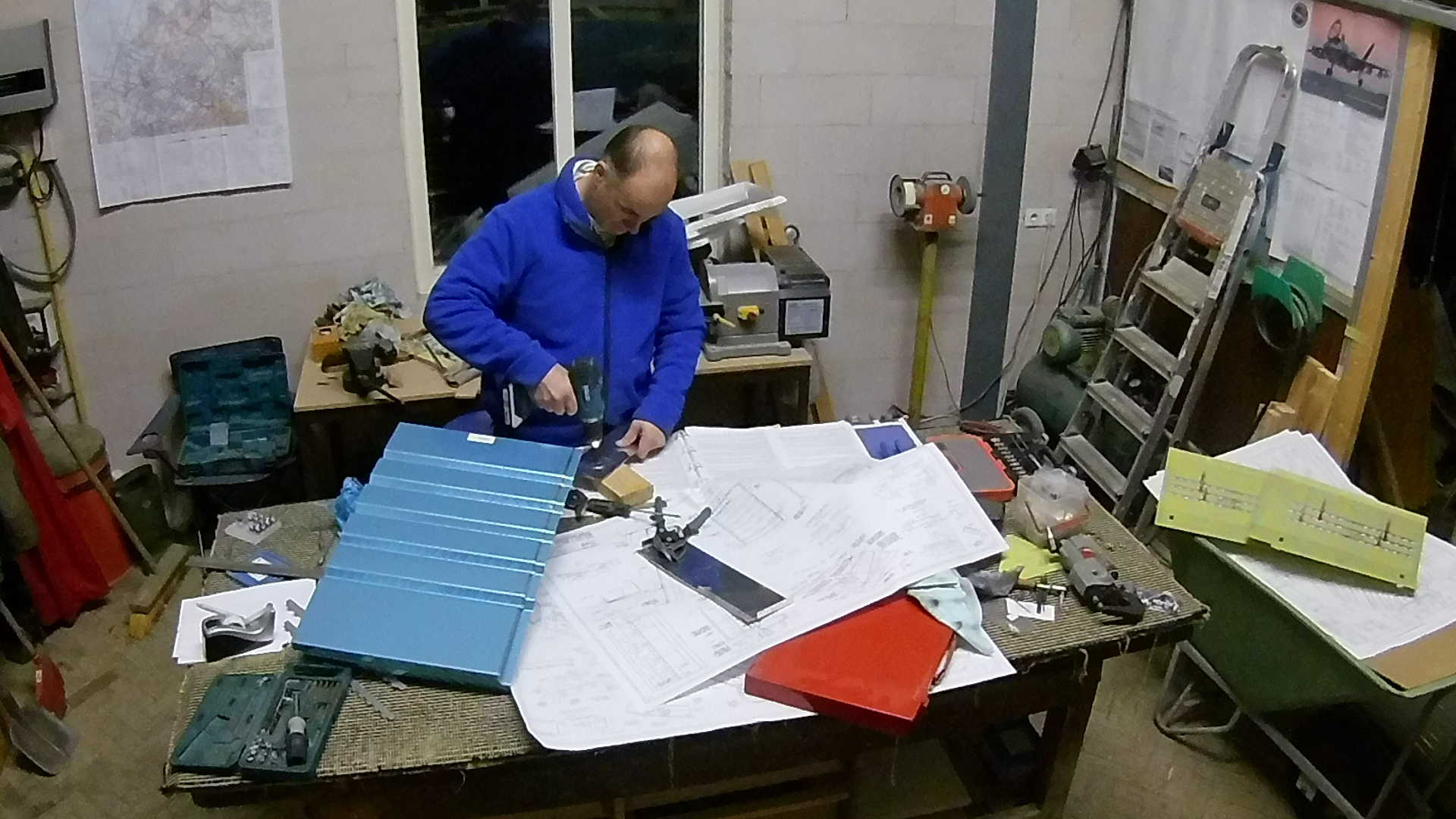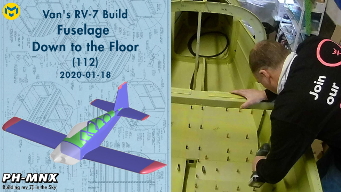The nutplates used in the baggage compartment are ‘treated’ with a thread tool, to make the thread easier to insert screws. All nutplates are slightly pinched at the end to prevent screws from vibrating loose.
That’s why I have the set of Thread taps (imperial measurements) to solve these issues.
I couldn’t reach in with the normal thread tap wrench, so I use a small ratchet wrench to tap the thread into the nutplate.
The forward baggage side panel is removable, to provide access to the Flap actuator rods to the wings. In case of some issue, you should be able to service these parts.
Now I can cleco all Floor panels to the bottom ribs and start inserting blind rivets (LP 4-3). Since it is impossible to use ‘normal’ rivets.
Some holes are just slightly of (probably from priming), so they need to be widened ever so little.
The center lines are not riveted, because the covers need to be removable. In this case for the Elevator pushrods. I use the sqeeuzer to dimple the nutplate holes.
I can now start on attaching the seat back placement on the floor with piano hinges. The pins of the piano hinges require some processing, to be able to remove them to adjust the seat back.
There are three defined places where you can attach the seat back to the floor.
I can now start on the seats itself. The material is very thin, but the side angles should provide the strength.
With a fly-cutter I create ‘lightening holes’. These are holes created to make the construction lighter, without decreasing the strength.
The seat side angles are pretty thick Aluminum profiles that need to be filed and grinded to nice curves.
Time: 5 Hours, Rivets: 0/0 (2020-01-15)
Time: 4 Hours, Rivets: 0/0 (2020-01-18)
